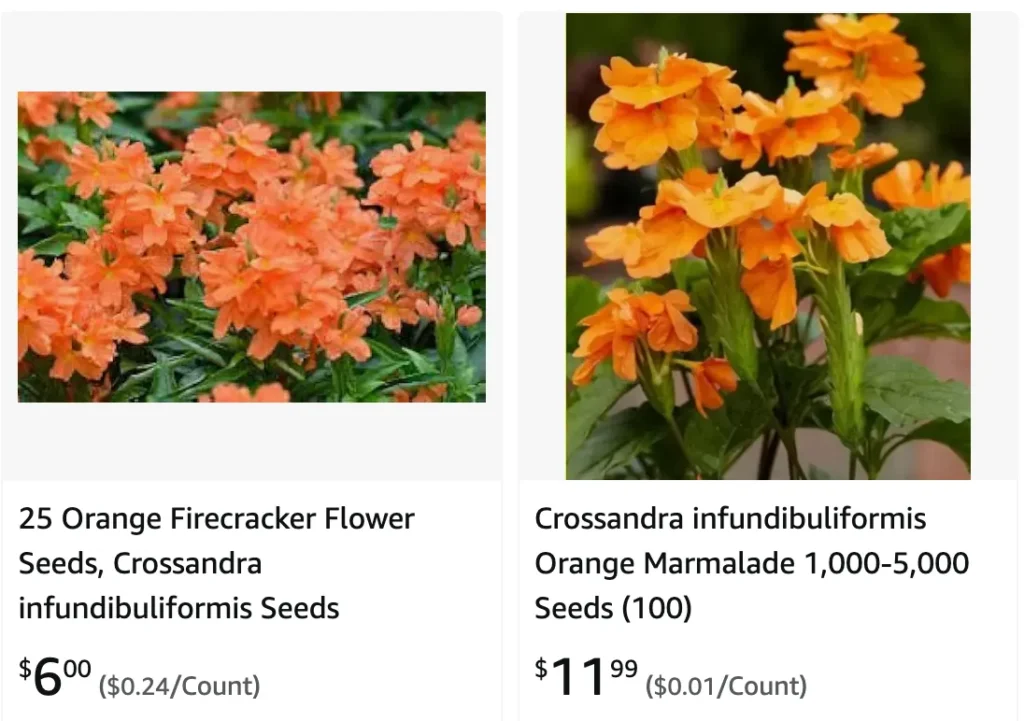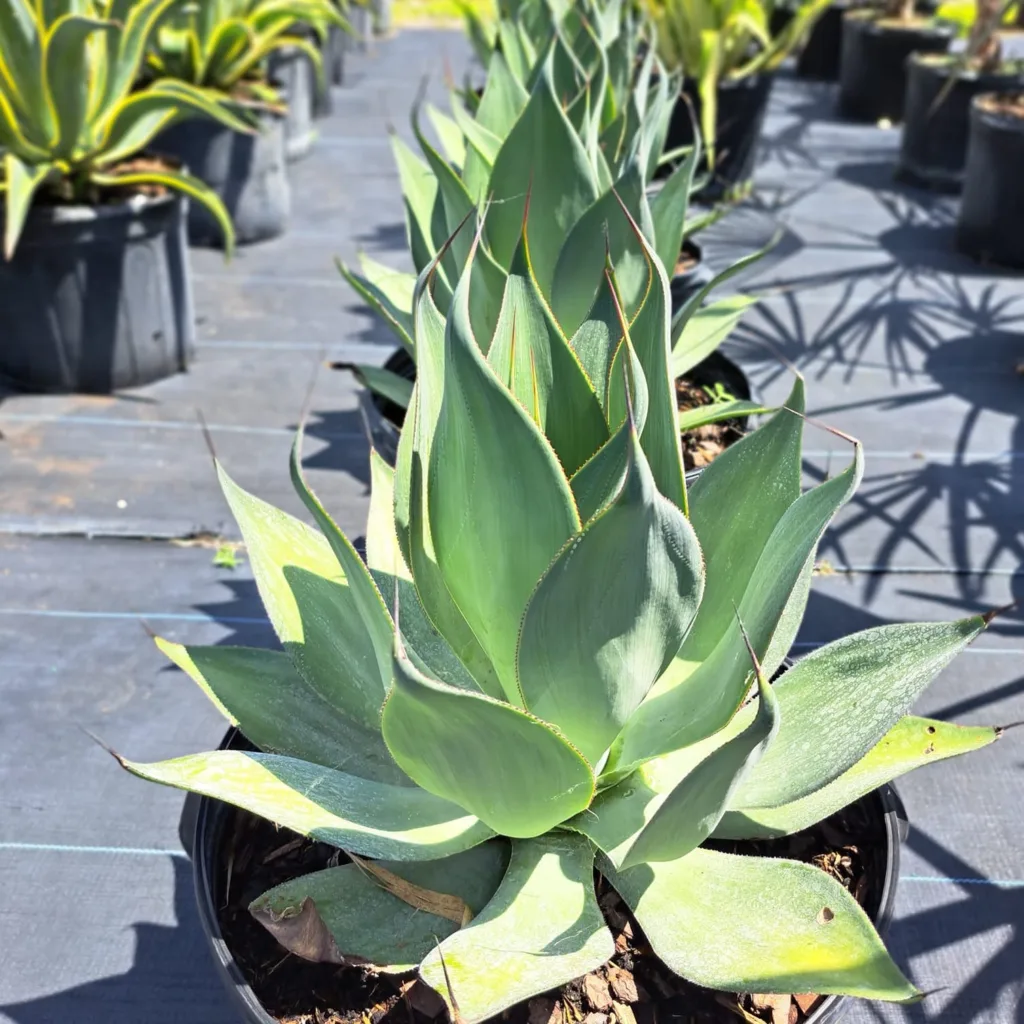
What is Crossandra Orange Marmalade?
Crossandra Infundibuliformis. Firecracker. Firewheel. Orange Marmalade. This vibrant flowering plant goes by many names, but for me, it’s become a source of endless fascination. The Crossandra Orange Marmalade, with its cheerful orange blooms and glossy green foliage, injects a burst of sunshine into any space.
Over the past year, I’ve been nurturing a few of these beauties on my balcony, and let me tell you, they’re surprisingly easy to care for. But there were a few stumbles along the way, like that time I planted them a tad too deep. That’s why I’m here to share my experiences and some helpful tips for anyone considering bringing a Crossandra Orange Marmalade into their lives.
54 Species in Genus Crossandra
Where to Buy Crossandra Infundibuliformis?
Finding a Crossandra Infundibuliformis can be exciting if you know where to look. I’ve had success purchasing these plants from specialized nurseries and online garden centers. Websites like Amazon and Etsy often have sellers who offer healthy, well-cared-for plants. Local plant nurseries and garden centers may also stock this variety, especially those specializing in tropical plants. Always check reviews and ask for plant care advice to ensure you’re getting a healthy specimen.
How to Care for Crossandra Infundibuliformis?
Caring for Crossandra Infundibuliformis is relatively straightforward once you understand its needs. It thrives in well-draining soil and prefers a sunny spot with indirect light. It’s important to keep the soil consistently moist but not soggy. I’ve found that watering once a week works well for maintaining healthy plants. In terms of feeding, a balanced, liquid fertilizer applied every two to four weeks during the growing season helps promote vibrant blooms.
How to Propagate Crossandra Infundibuliformis?
Propagation of Crossandra Infundibuliformis can be done through stem cuttings or seeds. I’ve had good results using stem cuttings taken from healthy, mature plants. To propagate, cut a 4-6 inch piece from the tip of a non-flowering stem, remove the lower leaves, and place it in a pot with a well-draining potting mix. Keep the cutting moist and in a warm, bright location. Rooting usually takes a few weeks. Alternatively, seeds can be sown in a seed-starting mix and kept warm until they germinate.
Can You Grow Crossandra Infundibuliformis Indoors?
Yes, you can grow Crossandra Infundibuliformis indoors, but it requires specific conditions to thrive. Provide it with a bright, sunny spot, ideally near a south-facing window. Ensure good air circulation and maintain humidity around the plant, as indoor environments can be dry. Regular misting or placing a humidity tray nearby can help. Indoor plants may need less frequent watering than outdoor ones, so monitor the soil moisture carefully.
What to Plant With Crossandra Infundibuliformis?
When planting Crossandra Infundibuliformis in your garden, consider pairing it with other tropical plants like Bird of Paradise or Heliconia. These plants share similar light and moisture requirements and complement the Crossandra’s vibrant colors. In container arrangements, it pairs well with other colorful annuals or perennials, creating a lively and eye-catching display.
Is Crossandra Infundibuliformis Toxic?
Good news for pet owners: Crossandra Infundibuliformis is not listed as toxic to cats or dogs. However, it’s always wise to keep any plants out of reach of curious pets to avoid any potential issues. If you have small children or pets, ensuring they don’t chew on the leaves or flowers is a good practice.
Benefits of Crossandra Infundibuliformis
The Crossandra Infundibuliformis isn’t just a pretty face. It’s known for its air-purifying qualities, making it a great choice for indoor environments. Additionally, its bright blooms attract pollinators like butterflies, adding a dynamic element to your garden. Its relatively low-maintenance nature also makes it an appealing choice for both novice and experienced gardeners.
Common Problems with Crossandra Infundibuliformis
Despite its resilience, Crossandra Infundibuliformis can face a few issues. Overwatering can lead to root rot, so it’s crucial to ensure proper drainage. Watch out for pests like aphids or spider mites, especially if the plant is indoors. Regularly inspect the leaves and stems, and treat any infestations promptly with appropriate insecticides or natural remedies.
How Does Crossandra Infundibuliformis Compare with Similar Plants?
Crossandra Infundibuliformis is often compared with other tropical flowering plants like the Hibiscus or the Bougainvillea. While all three offer vibrant blooms, Crossandra’s flowers are unique for their shape and color. Unlike Hibiscus, which may require more frequent watering and is more prone to pests, Crossandra is relatively low-maintenance. Bougainvillea, on the other hand, tends to have thorny branches and needs a bit more pruning compared to Crossandra’s bushy growth.
With a little TLC, your Crossandra Orange Marmalade will reward you with months of fiery orange blooms. It’s a low-maintenance plant that brings a touch of the tropics indoors or adds a burst of color to your outdoor space. So, why not give it a try? You might just find yourself captivated by its fiery charm, just like I am.
If i die, water my plants!



